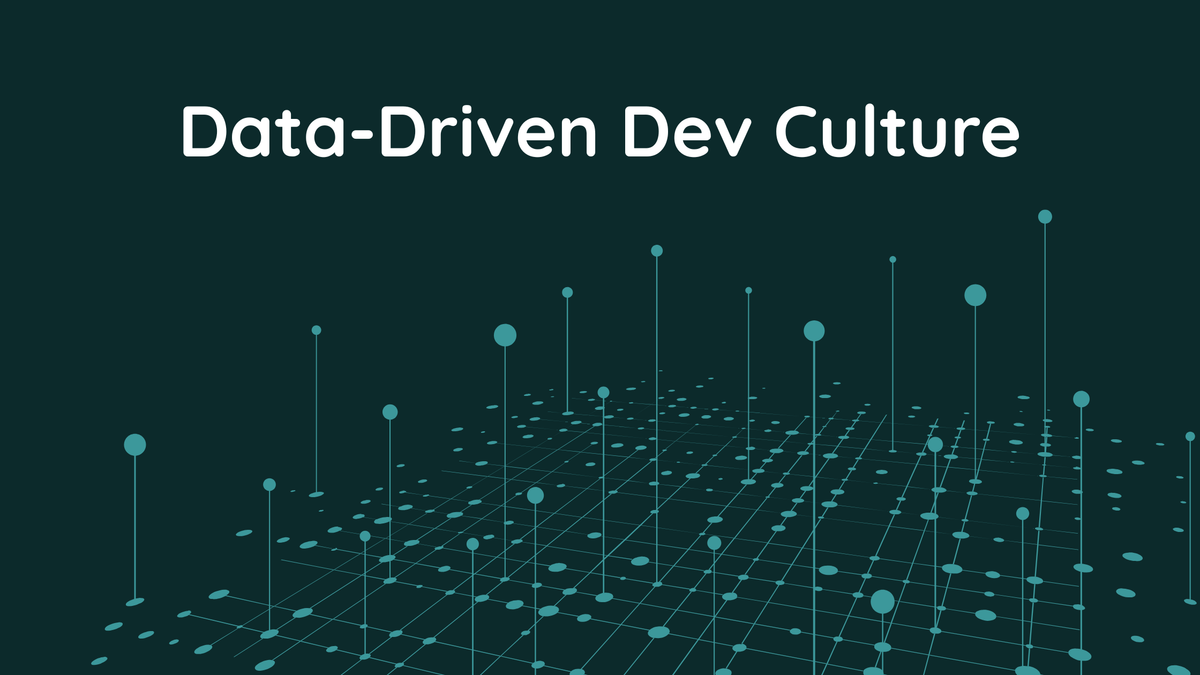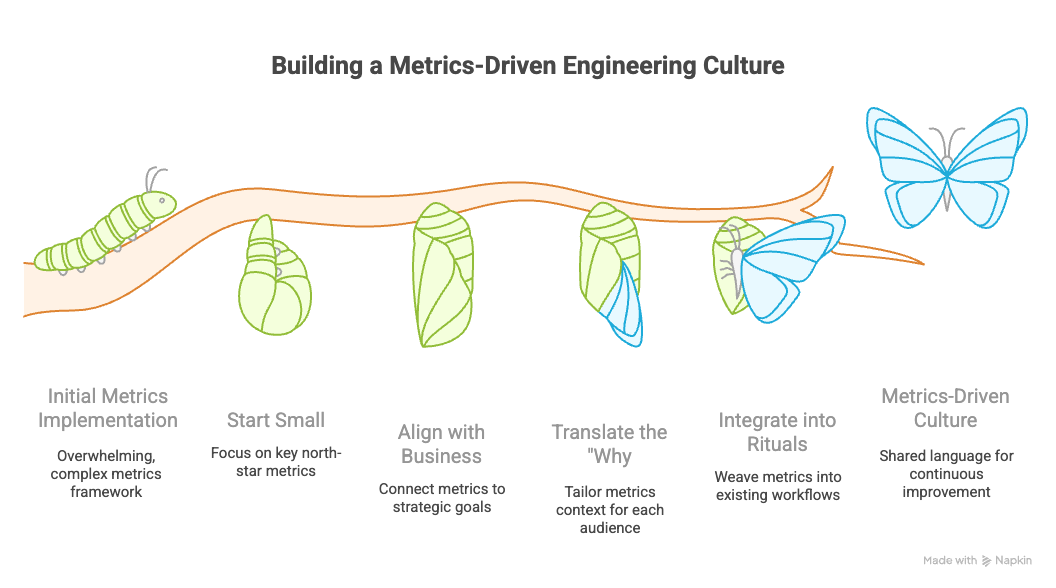4 Steps to Build a Data-Driven Dev Culture

This is one of the most common problems I hear from Directors and VPs of Engineering:
"I want my team to use data more, but I don't know where to begin." How can I use metrics without making it seem like "big brother"?
It's a real worry. Changes in culture are hard. Using a top-down, metrics heavy approach can backfire and make people angry and scared.
But you can't fly blind anymore without data.
Engineering is the heart of a tech company, and if you can't see that heart, you can't find problems, show how your team is making a difference, or make smart investments.
It's not just what you measure that matters; it's also how you introduce the idea of measuring.It's about creating a culture of always getting better, where data is seen as a light instead of a hammer.
Here playbook you can do to get everyone on your team to support a data-driven culture.

- Start Small and Take an Agile Approach
When we roll out a new product, we ship an MVP, collect feedback, and iterate. For some reason, we often forget this approach when it comes to our internal processes. Engineering leaders, in their excitement, sometimes try to measure everything at once, crushing their teams under the weight of too many new metrics.
This introduces risk, scope creep, and a loss of momentum. The first version of your metrics framework won't be perfect, so you’re better off shipping something simple and learning quickly.
Starting small also dramatically increases your chance of getting bottom-up support. When you pick one or two north-star metrics that truly represent the team's goals, it’s easy for everyone to get on board.
- Align Your Engineering Metrics with Business Reality
The most common follow-up question is always, "So, what are the most important things to measure?"
There are no universal metrics that every team must measure. The key is to understand your company's current strategic goals and choose metrics that reflect your engineering team's contribution to them. If your metrics aren't aligned with business goals, they are, at best, vanity metrics.
I’ve led teams through several distinct phases:
- Value Mode: Early on, the mission was to ship new product value as quickly as possible. We were focused on speed. Back then, we used clumsy proxies like velocity. Today, a metric like Cycle Time (the time from first commit to production release) is infinitely more valuable, and with modern tools, it's easy to track.
- Growth Mode: As the company grew, predictability became king. Sales and marketing had deadlines, and our job was to hit them. We needed to ship new value predictably. We focused on metrics like Iteration Churn to measure our consistency.
- Customer Mode: Eventually, retaining our 500+ enterprise customers became the top priority. Quality was paramount. We started tracking Change Failure Rate (the percentage of deployments causing a failure) and Mean Time to Restore (MTTR).
- Translate the "Why" for Different Audiences
Let’s be honest: engineers are often wary of metrics. They fear being misunderstood, micromanaged, or compared unfairly. At the same time, if you show a raw engineering metric to your CEO without context, it will be meaningless.
As an engineering leader, you're the translator. Context is everything. You must tailor the "why" behind your metrics for each audience.
Take Cycle Time. At EvolveDev, this single metric means different things to different people:
- For our developers, a faster cycle means less time waiting and more time building cool things. It’s a signal that they can take on more creative challenges more often.
- For our dev leaders, it’s a diagnostic tool. A spike in Cycle Time, visible on our dashboards, immediately points to a bottleneck in our process—be it slow code reviews or deployment friction.
- For our business leaders, Cycle Time is a proxy for business agility. They can see if our delivery speed is trending in the right direction and correlate that directly to faster feature releases and revenue.
- Weave Metrics into Your Existing Rituals
For metrics to become part of your culture, they must be integrated into your team's natural rhythm. Don't create new meetings just to review dashboards. Instead, bring the data to where the work already happens.
Pull up a key dashboard during:
- Daily Stand-ups
- Sprint Retrospectives
- 1-on-1s
- All-Hands meetings
When data is part of the regular conversation, it becomes a shared language for improvement, not an occasional report card.
So, Where Do You Start?
You start by recognizing that a data-driven culture isn't about the numbers themselves. It's about fostering an environment of continuous improvement where every team member has the clarity they need to make better decisions.
It begins with a single source of truth that makes data accessible, understandable, and—most importantly—actionable. The right engineering intelligence platform is the foundation, giving you not just charts, but the clarity you need to build a high-performing team that wins.
Ready to Build Your Data-Driven Culture?
Building a data-driven culture feels hard, but it doesn't have to be. EvolveDev.io is the engineering intelligence platform designed to do the heavy lifting for you.
Instead of wrestling with spreadsheets and siloed data, EvolveDev gives you a single source of truth that:
- 🎯 Pinpoints what matters with AI-driven insights, so you can start small and smart.
- 📈 Connects engineering work directly to business goals with our Investment Dashboard.
- 💬 Automates reporting and provides clear visuals for every audience, from your dev team to the C-suite.
- ⚡ Integrates into your daily workflow with smart, proactive notifications in Slack and email.
Stop chasing data and start driving engineering excellence.
See how EvolveDev.io can help your team → Book a Demo





